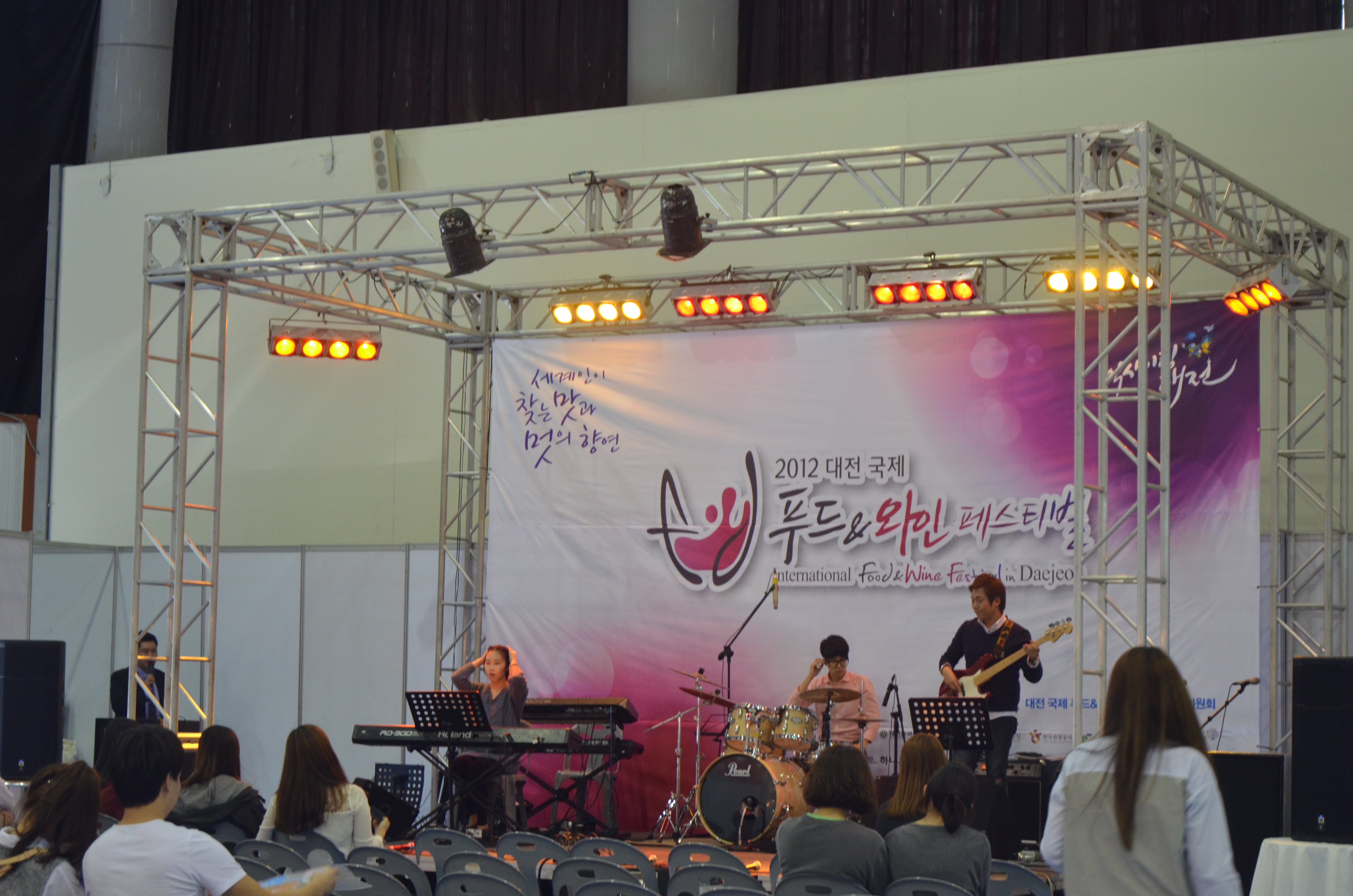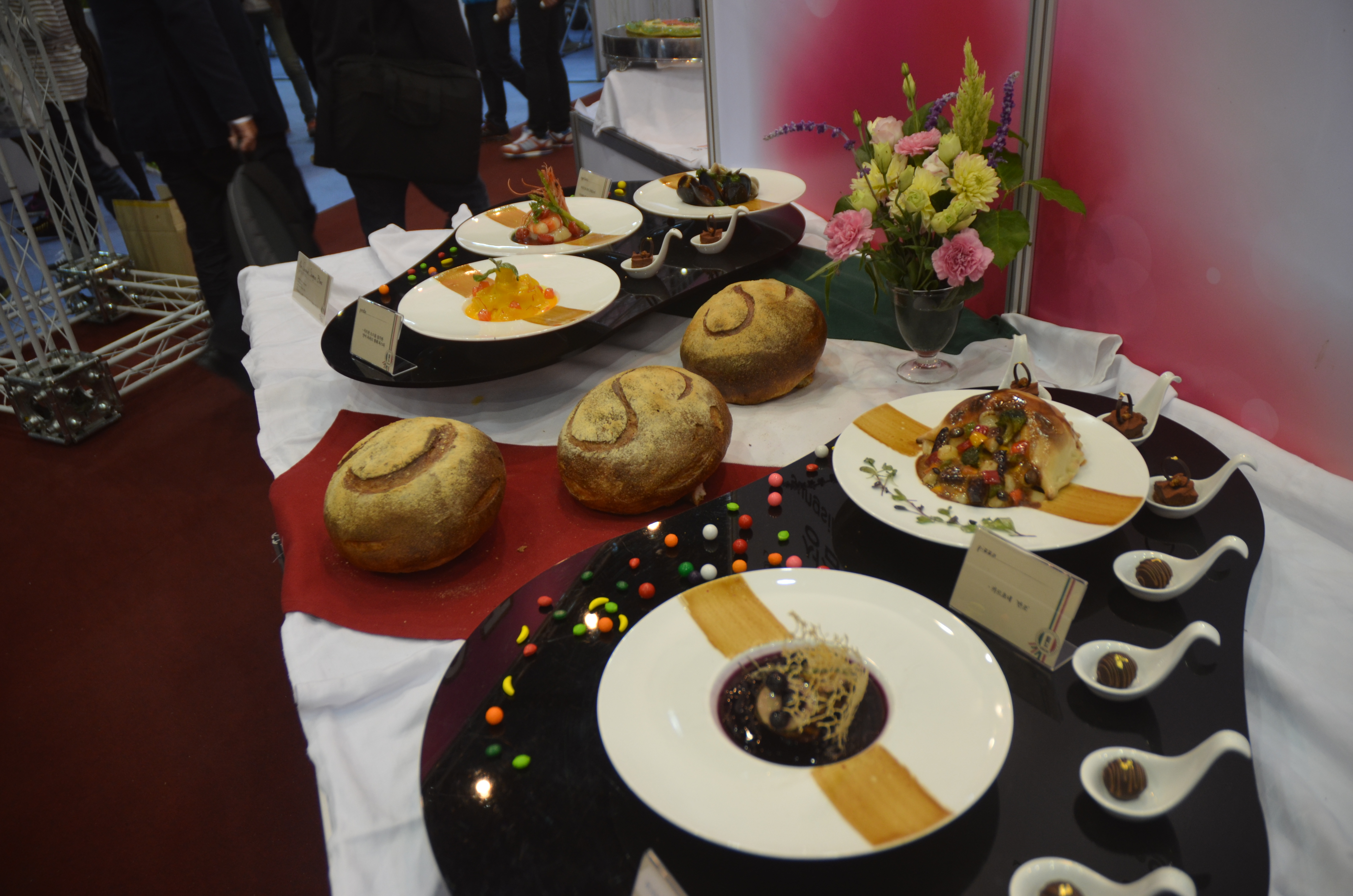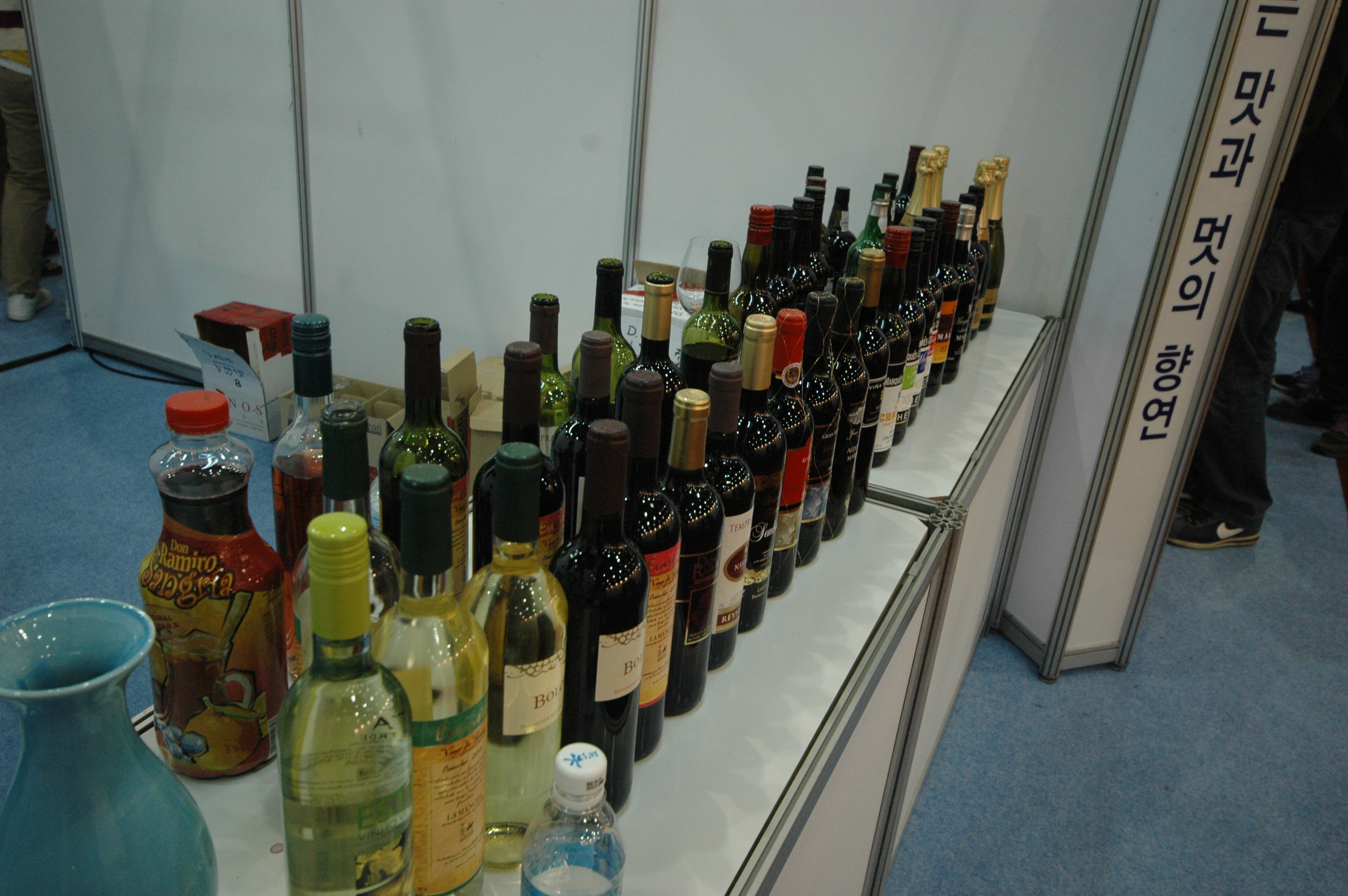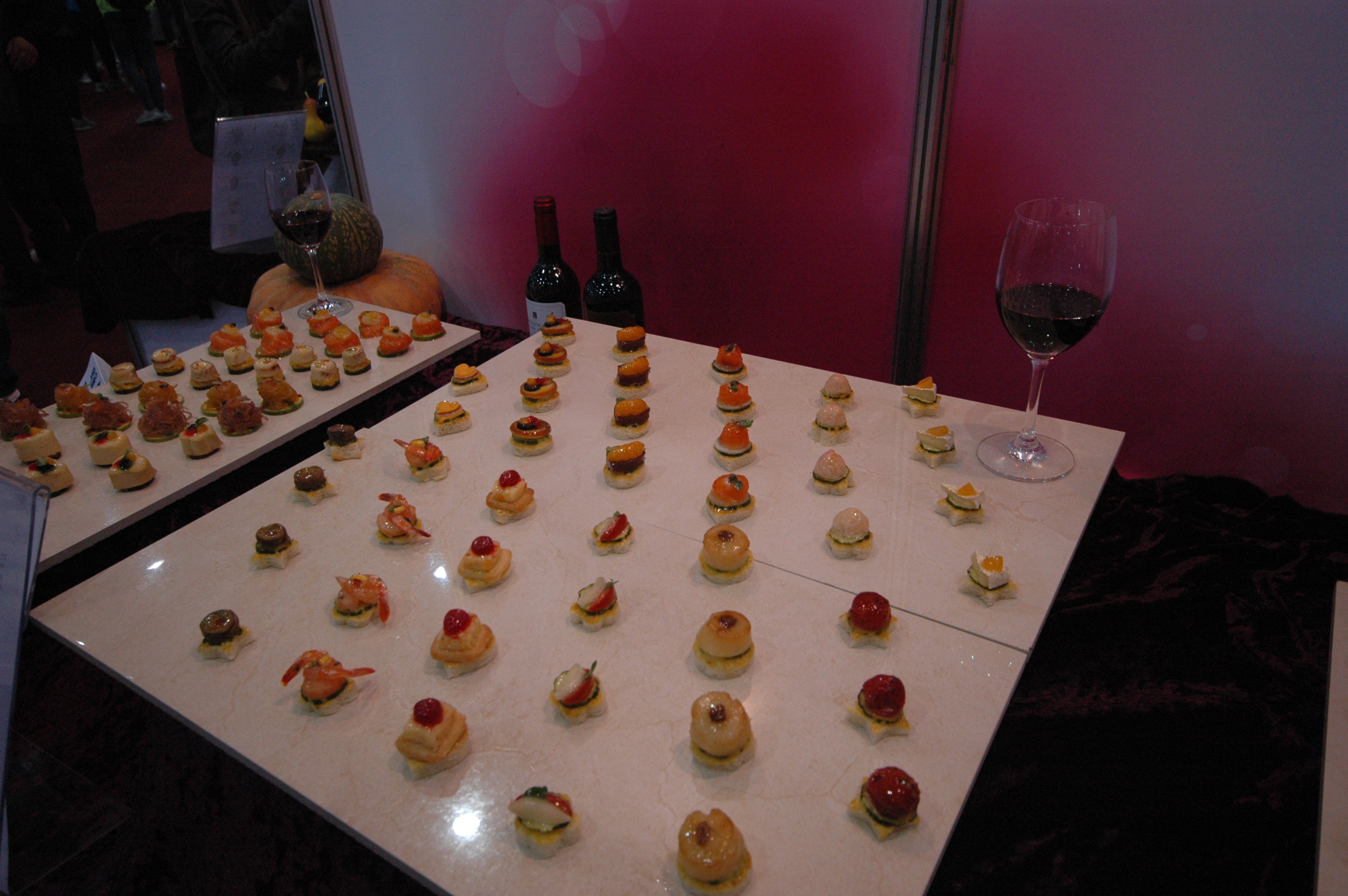



ED
CBT reporters visited the 2012 International Food & Wine Festival in Daejeon which was held for 4 days from October 12 to 15. In front of the entrance, there were many people who came to the festival. Many people stood in two lines to buy a glass to sample wines in the large tent. The price of a glass was 3,000 won. To buy a glass, people had to show their identification because wines are a kind of liquor.
The large tent was rich with the wonderful scent of wines. There were many booths which were divided according to countries and places to sample various wines. In the booths, foreign sommeliers introduced about types of wines, and people could sample the wines provided by sommeliers. People also could freely sample wines for themselves in a place which was equipped with various wines.
The history of wine
According to historical records, human beings used wines in festivals, business transactions, and religious ceremonies. The wines spread to all of Europe with Rome as its center. Rome was located in the Mediterranean, so its environment was appropriate to cultivate grapes. Moreover, those were times when Rome continued wars, so the quality of water was not good. To prevent soldiers from getting ill, wines were provided for them. Many vineyards were made in Rhone, Marseilles, Bourgogne of France according to demands. These vineyards were the foundation for a series of European wines. After the fall of the Roman empire, technologies for making wine were popularized by monasteries. At that time, people used wine for religious rites and medical treatments. After that, wine gradually spread into France, Italy, and Germany, and wines began to be produced in the new worlds (United States, Chile, Australia, and New Zealand) in the late 19th century. Consequently, the wine industry was developed and the production also increased.
The beginning of Korean wine
The wine industry, which was developed around the world, also had a large impact on the liquor industries of Korea in the late 19th century. Wine was first propagated in Dae-Bul hotel. At that time, people were not interested in wine because it was for people who belonged to the upper class. Most people drank soju and raw rice wine, but the consumption of alcoholic beverages changed after liberation. People were not self-sufficient anymore in grain production, so the poor people often starved in the springtime. Because soju and raw rice wine were made of grains, they were no longer produced. As a result, the Korean government advised major companies on constructing factories for producing wines and on making large vineyards. The government hoped that wine would become popular because grapes can grow well in barren lands and foreign currency from the importation of grain could be saved. After that, wine began to spread in Korea.
The kinds of wines
People, who want to distinguish the kinds of wines, need to check the outward appearance of the wine. The outward appearance of wine can be an important factor to distinguish the kinds of wines and give people the pleasure of the view. If people do accustom themselves to distinguish the kinds of wines with the outward appearance of wine, they can know the area of production, taste, and percentage of alcohol with only a scent of the wine. In addition, there are four standards to distinguish the kinds of wines. The four standards are the degree of sweet taste, color, course of dinner and way of production. However, most sommeliers use two standards, which are the degree of sweet taste and the course of dinner. According to the two standards, there are dry wines, sweet wines, and medium-dry wines. Because natural grape sugars ferment, dry wines have a slightly sweet taste, so they are proper to drink at meals. In contrast with dry wines, sweet wines are relatively sweet because the natural grape sugars remain. Sweet wine is for drinking with dessert after meals. Meanwhile, medium-dry wines, which are called a semi-sweet wine, have a taste between dry wine and sweet wine.
People will be intimate with wine through the 2012 International Food & Wine Festival in Daejeon
There was a place to sample wines freely for themselves in the center. Wines, which were produced in various countries, were furnished on the rectangular tables. Instructions, which included name, production year, and percentage of alcohol, were adhered to the tables. Reporters met people who came to the festival. Han Ju-hui, who lives in Daejeon, said, “My hometown is Daejeon, but I came to this festival for the first time. I think that people are not intimate with wine, and I also did not know about wine at all. However, I could get information about wines by coming to the festival. A sommelier explained about how I can distinguish wines. My taste seems to be dry wine. I will be more interested in wine than ever before.” Kim Min-gi, who is from Cheongju, also said, “It was not a regrettable choice for me to come from Cheongju to Daejeon. In the meantime, I did not have a mind to buy wine because I think wine is a very expensive alcohol. However, I could buy wine with high quality at almost ten thousand won, so I was really happy.” An anonymous sommelier said, “The 2012 International Food & Wine Festival in Daejeon, which is with sommeliers all around the world, put emphasis on making people know more about wines. We hope that people will become more and more intimate with wine through this festival. People think that drinking wine is hard for them.” In addition, she said, “That may be why there are expensive prices of wine and a lack of information about wine. However, there are many wines which are inexpensive with good quality. One of the purposes of this festival was to provide much information about wine for people. Whenever people tell me, "Wine is not difficult anymore," I am very happy as a sommelier. I am sure that people will be more intimate with wine than ever before in the future.”


 All
All Culture
Culture






 이하나
이하나











